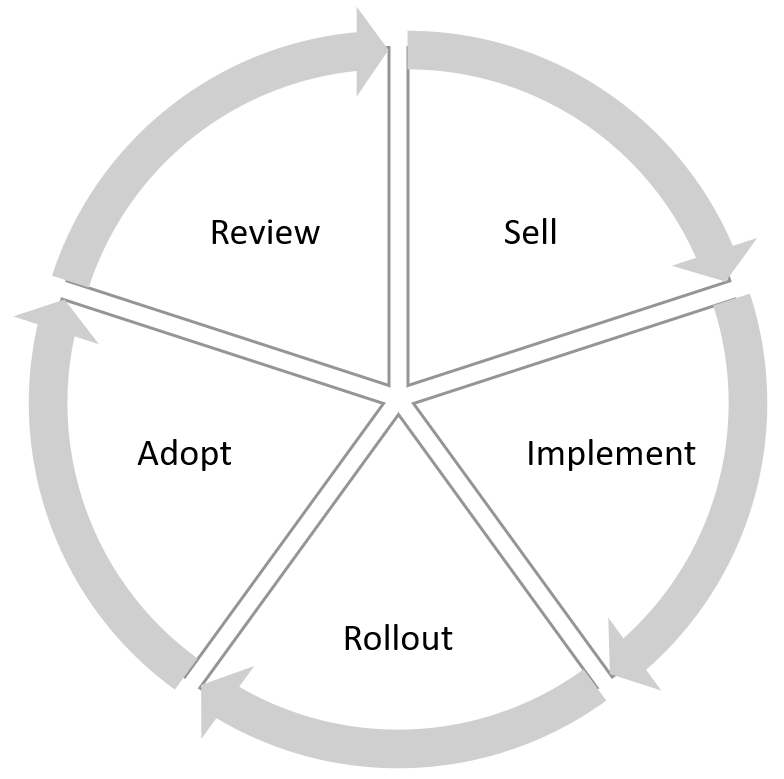Piyush Agrawal entered the IT industry in the early 90s with stints at Infosys and Citibank offshore development units when their revenue was barely 10 million USD. He has experienced and influenced firsthand the transformations through the Y2K, dot com, social media, and recently software-as-a-service (SaaS) revolutions in the IT sector from those days to now. Piyush is currently supporting the booming SaaS industry as a leading thought leader, influencer, and technology enabler via his latest initiative, Latviv, that offers a combination of content, services, and software to help vendors manage their customer relationships better.
With the first of its kind pandemic across generations, every leader in the corporate world was scared, at least for a bit, in the last couple of years. However, after a period drenched in pessimism, almost every industry has seen a solid optimistic and euphoretic wave. The investments have followed. Now, investors have tasked every corporate leader to build an advantage in the new normal. They ask business leaders to sustain previous levels and grow to new heights.
I believe that this work should start with perception analysis. What are my stakeholders (customers, employees, partners, suppliers, and investors) thinking about my company? Is the company aura sustainable and reinforce able? Are my customer-facing and corporate processes aligned to satisfy and delight customers?
To answer these questions, in this article, I will share successful business paradigms, innovation focus, labor considerations, skill development, agility, governance, and digital efficiencies, as seen at a few of the pioneering companies in the world today. The ideas and suggestions in this article are applicable across industries and sectors, catering to both business customers and end consumers.
Customer Experience and Customer Success
While customer experience seems synonymous with customer success, the latter is the outcome and value that the customer receives from vendors. In contrast, customer experience precedes customer success. Without a good customer experience, the likelihood of the customer’s end-users using or attempting to use the product will be less. Even if your product works and addresses customer’s requirements, sub-optimal people and processes could prematurely stall the project, affecting renewals or resales and customer retention.
Customer and vendor personnel interact in circular phases – from sales to implement, rollout, adopt and review. These phases are circular since, after every cycle, there is an opportunity to sell more services and products and repeat the process. Today, companies increasingly employ dedicated personnel with customer success manager roles to keep repeating this cycle and boost revenue. Excellence in each phase forms a strong foundation for the next one and the next cycle iteration.

It would be worthwhile to share examples from established organizations that excel in customer experience.
- Amazon’s return policy and return avenues (UPS, FedEx, partner retailers such as Kohls) assure shoppers that they could return purchases effortlessly if they ordered the product in error or not in line with the buyer’s expectations.
- Costco’s two-year automatic warranty on electronics differentiates itself from other vendors while maintaining competitive pricing. I was personally very pleased when Costco sent a technician to repair a $1600 75-inch TV after it broke down a few months after purchase.
Entering New Markets
Cultural and geopolitical differences and lack of brand awareness are a hindrance to vendors serving nonlocal markets. Moreover, these differences could manifest as prejudices and biases among prospect influencers, decision-makers, and sponsors. Nevertheless, we have seen companies launching new products for cross-border trade, new industries, or customer segments.
These successful companies pursued one or more of the following strategies against the entrenched competition:
- Cost-effective product development and pricing
- Better quality
- Faster delivery
- Superior customer service
- Targeted marketing
- Diplomatic outreach in case of state-affiliated prospects (i.e., government)
After the first few customer successes, perception and brand established themselves, making it easier to reinforce and promote the brand throughout the new market segment.
Company Perception in Customer’s Minds
Building a company’s perception takes a lot of effort and product fine-tuning in the early stages of a vendor’s formation. Over a period, this perception becomes the brand and reputation of the company. Once a representative focus group validates the perception, marketing teams align and increase the intensity of their messaging to reinforce this perception. Customer Relationship Management (CRM) and Enterprise Resource Planning (ERP) vendors have built their brands over the years using these initial successes.
I use an analogy from a consumer product company to relate to technology and non-technology savvy readers. BMW’s “driving machine” is a classic brand management example taught in business schools. BMW engineering teams designed their products to create a perception that BMW cars are engineering marvels. BMW cars’ handling of user-managed controls such as steering wheel, brakes, and accelerators, supported the perception of sturdiness and engineering superiority in user’s minds. BMW’s marketing team then worked alongside the product teams to institutionalize the “driving machine” brand in line with its capabilities.
Skill Development and Learning
Successful leaders are paranoid about getting better every day and are working hard to increase the maturity of all company operations. They are constantly looking for gaps and evaluating strengths. Then, building on what works, they institutionalize best practices, risk assessments, checklists, and templates to pursue a consistent approach across all company operations. Continuous training, cross-sharing of ideas, adverse event monitoring and resolution, indicator tracking, quarterly business reviews with customers, and service with a smile are a few of the many pursued activities and approaches at successful enterprises.
Risk Management
Protecting companies’ interests should be a full-time job at medium to large enterprises. A balanced growth perspective is crucial for sustainability. Growth ideas that compromise stability should be discouraged. Let’s take reputation loss as an example.
Mass media tends to focus on consumer-facing products and services. Reputation loss for a consumer product company can be significant once mass media picks up and distributes news of compromised safety, hygiene, and or quality in the company’s products. While business-to-business products and services do not get picked by mass media, localized media outlets, and research analysts covering that space will not hesitate to distribute the news. If not, competitors will pounce on the information and ensure all customers and prospects receive the word of sloppy product or bad customer experience or loss resulting from the transaction.
Bringing it Together
Enterprising companies are introducing new business paradigms with optimized labor, effective governance, digitization, hyper efficiencies, and agile deployment methods. Every company seems to have a renewed energy to excel after the pandemic. My closing message to them will be “stay paranoid, innovate constantly, and keep learning.”


